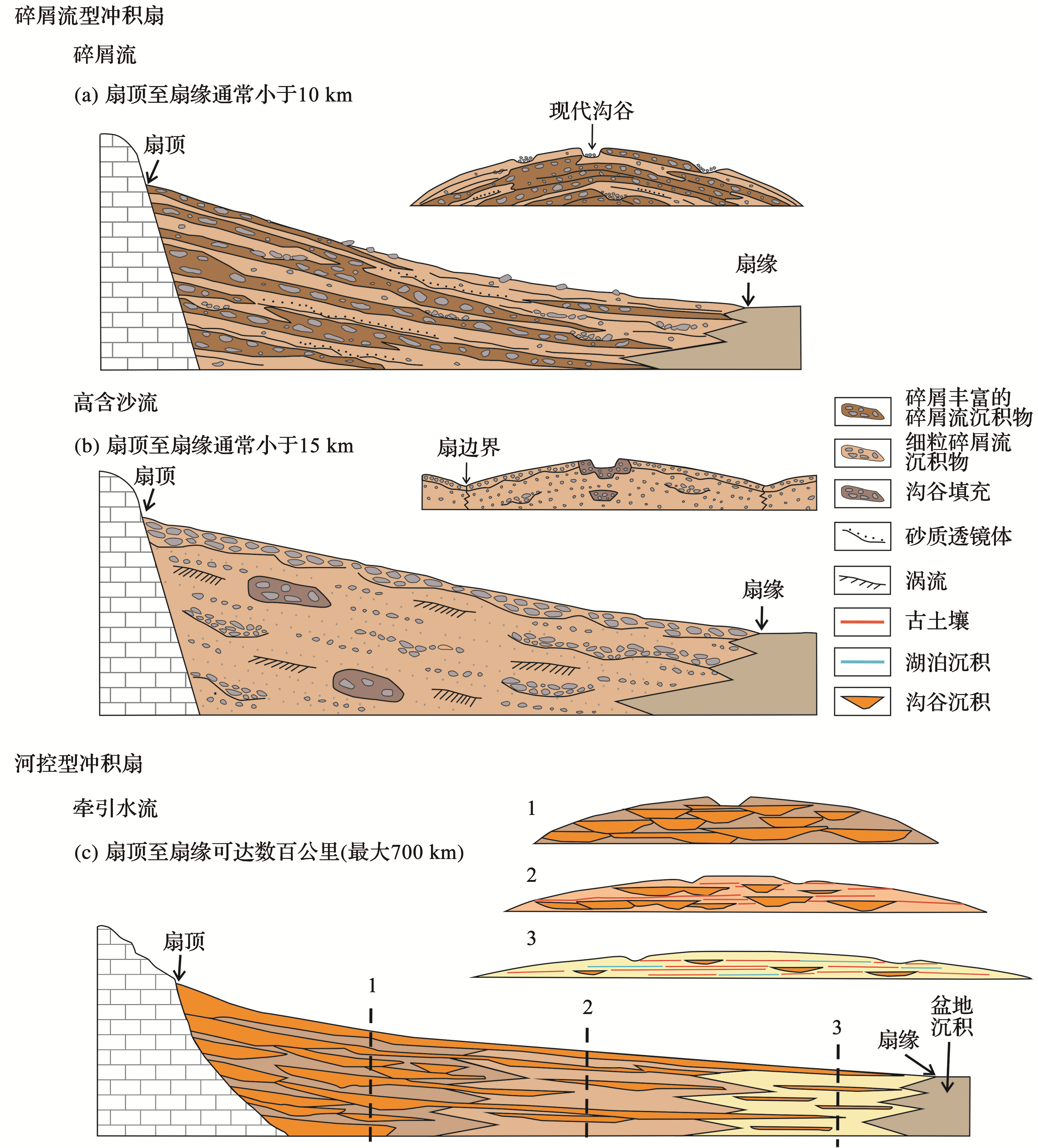冲积扇形态与沉积特征及其动力学控制因素:进展与展望
Morphology and Dynamics of Alluvial Fan and Its Research Prospects
(a)由碎屑重力流形成的扇体,扇面坡度较陡,沉积物分选差,多含粒级较粗的砾石,夹杂砂质透镜体;(b)由高含沙重力流形成的扇体,沉积构造和结构主要由中度分选的砂质、砂砾质透镜体和薄片组成,伴生少量砾石层;(c)由牵引水流形成的河控型扇体,扇面坡度较低,沉积物分选较好,沉积层序相对简单,几乎全部由砂砾层和砂层组成,夹有古土壤和湖泊沉积;从扇顶至扇缘,不同位置的横剖面(编号:1,2,3)显示了河控型冲积扇的沉积结构
(a)The alluvial fan formed by the debris gravity flow has a steep slope, poor separation of sediments, and contains coarse gravel with sandy lens; (b)The sedimentary structure and structure of the alluvial fan formed by the hyperconcentrated gravity flow are mainly composed of moderately separated sand, sand and gravel lenses and thin sections, accompanied by a small amount of gravel layer; (c)The fluvial fan formed by the traction water flow has a low slope, a good separation of sediments, and a relatively simple sedimentary sequence. It is almost entirely composed of sand and gravel layers, sandwiched by ancient soil and lake deposits. From the fan apex to the toe, cross-sections at different locations (No. 1,2,3) show the sedimentary structure of the fluvial fan
